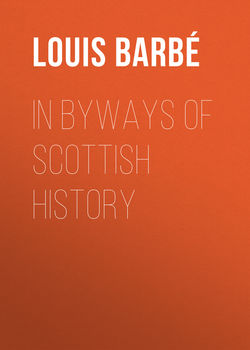Читать книгу In Byways of Scottish History - Louis Auguste Barbé - Страница 1
Preface
ОглавлениеWhen the author of the following papers came to Scotland, many years ago, he knew nothing of the country that was to become his home, and was hardly less ignorant of its history. To acquire some acquaintance with both he followed the same plan: he began with the highways, as indicated, in the one case, by the advertisements of the railway and steamboat companies, and, in the other, by the works of Tytler and Hill Burton. Before long, however, he learned that the knowledge thus obtained might be pleasantly supplemented by independent excursions off the beaten track. Topographically the result was the discovery of charming bits of scenery, of which he still recalls the picturesque beauty with delight. Historically, too, he found his way into interesting nooks and corners which his early guides had either ignored entirely or contented themselves with referring to in the briefest words. The outcome of some of his explorations – if it be not presumptuous to apply such a term to them – is set forth in the present volume. In venturing to publish it, he is not without a hope that the interest which he has felt in his rambles through some of the byways of Scottish history may, to some extent, be shared by others. If he should be disappointed in this, he will have to admit that he has done less than justice to subjects that had it in them to be made pleasant and attractive.
Those subjects are varied, but, as regards most of them, not wholly unconnected. Dealing, as they mainly do, with the sixteenth and early seventeenth centuries, they have, at least, a certain chronological unity, and may, in some slight degree, help to supplement the general knowledge of one of the most picturesque periods in the history of Scotland.
What has so far been said does not, it must be allowed, apply very directly to one of the papers contained in the present collection. It cannot be claimed for the "Longtail" myth, of which the story is here given, that it is essentially Scottish. It may, however, be urged in support of its right to appear here, that it was French at a time when, as regards antipathy against England, the agreement between France and Scotland was a very close one. And, if further justification be needed, it may be found in the fact that some of the Scottish chroniclers are amongst those who supply the most valuable information concerning both the prevalence and the alleged origin of the quaint medieval belief that Englishmen had tails inflicted on them in punishment of the impiety of some of their pagan forefathers.
In connection with this paper the author has the pleasant duty of expressing his thanks to Dr. George Neilson, to whom he is indebted for several illustrative passages; and also to Mr. Barwick, of the British Museum, without whose ready help a number of others would have remained inaccessible.
Some of the papers have appeared, mostly in a condensed form, in the Glasgow Herald and the Evening Times, and thankful acknowledgment is made of the permission readily granted to make further use of them.
Responsibility is admitted, at the same time that indulgence is craved, for the translations of old French poetry and medieval Latin verse which occur in some of the sketches.
In the case of the latter, more particularly, it has not always proved an easy task to supply English versions of the monkish doggerel. It is hoped, however, that if the letter has been freely dealt with, the spirit has been preserved.
